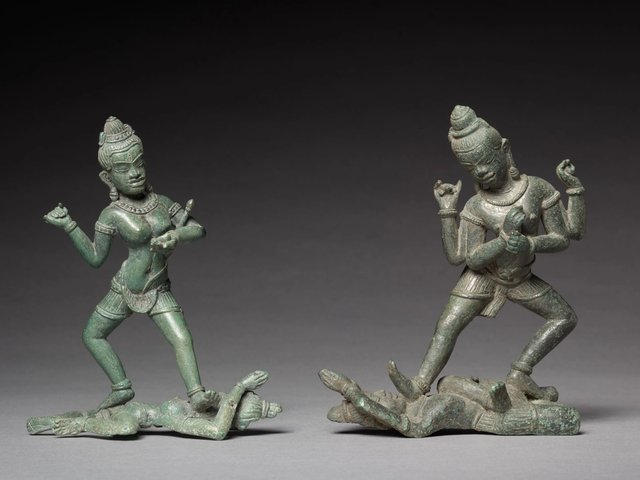What looked set to be a test case in restitution law has been quietly resolved outside the courtroom. The US federal government, Sotheby’s auction house and a client who consigned a statue originally from the ancient city of Koh Ker in Cambodia signed an agreement last month. In doing so, they have avoided a public hearing that may have set a legal precedent for the sale of objects with unclear provenance.
In a surprise move, Sotheby’s says it will return a tenth-century statue of a Hindu warrior to Cambodia. The statue, thought to be of Duryodhana leaping into the air, was withdrawn from an auction at Sotheby’s in 2011 after the Cambodian government registered a protest. The work had been estimated to sell for between $2m and $3m.
Soon after it was withdrawn from the sale, federal prosecutors sought the forfeiture of the statue, claiming that it had been stolen from Cambodia and illegally imported into the US.
Sotheby’s was initially defiant. The auction house argued that Cambodia had not demonstrated legal grounds for its claim and said that, given the US could not show unambiguously that an ownership law had been broken, it was quite wrong to question title to the work.
The agreement, signed last month, is an about-turn for all parties. The government has dropped allegations against the auction house and the statue’s consignor, a Belgian woman called Decia Ruspoli di Poggio Suasa, who bought the piece from the London auction house Spink & Son in 1975.
The agreement effectively clears Sotheby’s and Ruspoli of any wrongdoing, with both parties free to maintain Ruspoli’s clear title to the work and to deny “ever knowing or believing that the statue belonged to” Cambodia. The federal authorities no longer contend that either party deliberately misled anyone about the work’s provenance.
In turn, Ruspoli and Sotheby’s have “voluntarily determined, in the interests of promoting co-operation and collaboration with respect to cultural heritage, to arrange for the statue to be transferred to the Kingdom of Cambodia”, according to the court papers. Ruspoli will not receive any compensation.
The auction house declined to comment, although a source close to the case says: “Sotheby’s never went into this saying let’s spend years and lots of money on something that wasn’t even its property.”
For a brief period in the tenth century, Koh Ker was an impressive metropolis. But the jungle encroached, covering the city until it was rediscovered in the 19th century. There has been systematic looting of the site since the 1950s, and the Cambodian government has recently been making concerted efforts to get its treasures back.
Many objects are in private collections and museums in the West. In 2013, New York’s Metropolitan Museum of Art returned two tenth-century sandstone sculptures, which came from the same temple complex as Duryodhana, to Cambodia after federal authorities produced evidence that the works had probably been removed illegally. Other works remain in institutions including the Norton Simon Museum in California, which has had a twin statue to Duryodhana in its collection since 1980.
The agreement has thwarted hopes for a clear ruling on what constitutes Cambodian cultural heritage. “This case was never resolved, but these issues have to be clarified,” a source close to the matter says. “There are a lot of players in here: museums, auctions, collectors, courts and nations.”
Others argue that the agreement may have a positive effect. The decision to return the statue “after such a bruising fight will probably send a clear signal to other museums that possess Khmer objects that left Cambodia under similar circumstances. None has Sotheby’s deep pockets or the stomach to launch a similar legal fight,” says Jason Felch, the co-author of Chasing Aphrodite.
Originally appeared in The Art Newspaper as 'Cambodian smuggling saga quietly resolved out of court'


